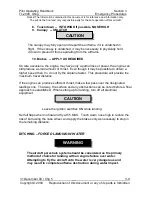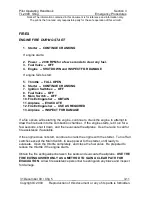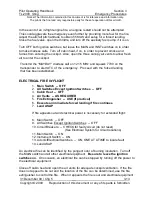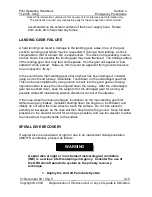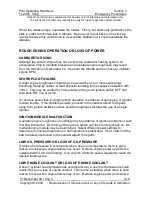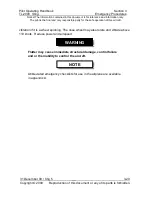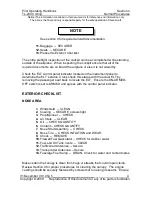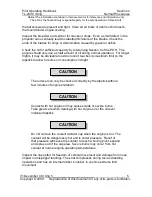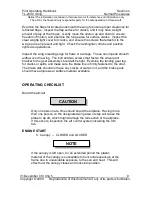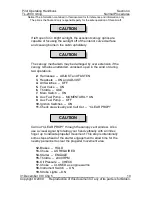
Pilot Operating Handbook
Section 3
TL-2000
Sting
Emergency Procedures
Notice! The information contained in this document is for reference and information only.
The pilot is the final and only responsible party for the safe operation of this aircraft.
31 December 09 / Chg 5
__
3-15
Copyright © 2009 Reproduction of this document or any of its parts is forbidden.
accumulated on the exterior surface of the hot air supply hose. Rotate
both vents aft to help clear any fumes.
LANDING GEAR FAILURE
A hard landing can result in damage to the landing gear, axles, tires, or the gear
sockets. Landing gear failure may be suspected if, during a hard landing, a shock
comparable to that of a blown tire is experienced. This does not necessarily mean a
tire has blown, but possibly the landing gear may have fractured. The trailing surface
of the landing gear strut may tear and separate. If so the gear will appear to ‘bow
outboard’ while parked. However, this may not be apparent from ground observers
on an inspection “fly-by.”
In the event that a main landing gear strut or wheel has been damaged, consider
using a smooth sod runway, if available. Touchdown on the undamaged gear first.
This can be accomplished by using aileron to bank into the good gear and using
opposite rudder to keep the nose aligned down the runway. After the undamaged
gear has touched down, keep the weight off of the damaged gear for as long as
possible while still maintaining positive directional control of the airplane.
If the nose wheel has been damaged, touchdown on the main landing gear first
without using any brakes, (consider shutting down the engine on touchdown) and
initially do not allow the nose wheel to touch the surface. Do not lose elevator
authority at low speed, as the nose will then drop hard to the ground. Keep full back
pressure on the elevator control for as long as possible, and use the elevator to allow
the nose wheel to gently settle to the surface
SPIRAL DIVE RECOVERY
If a spiral dive is encountered at night or due to an inadvertent cloud penetration
(IMC/IFR conditions), proceed as follows:
A spiral dive at night or in instrument meteorological conditions
(IMC) is a serious, life threatening emergency. Consider the use of
the GRS aircraft parachute system as the primary recovery
technique.
1. Deploy the Aircraft Parachute System
WARNING
WARNING









